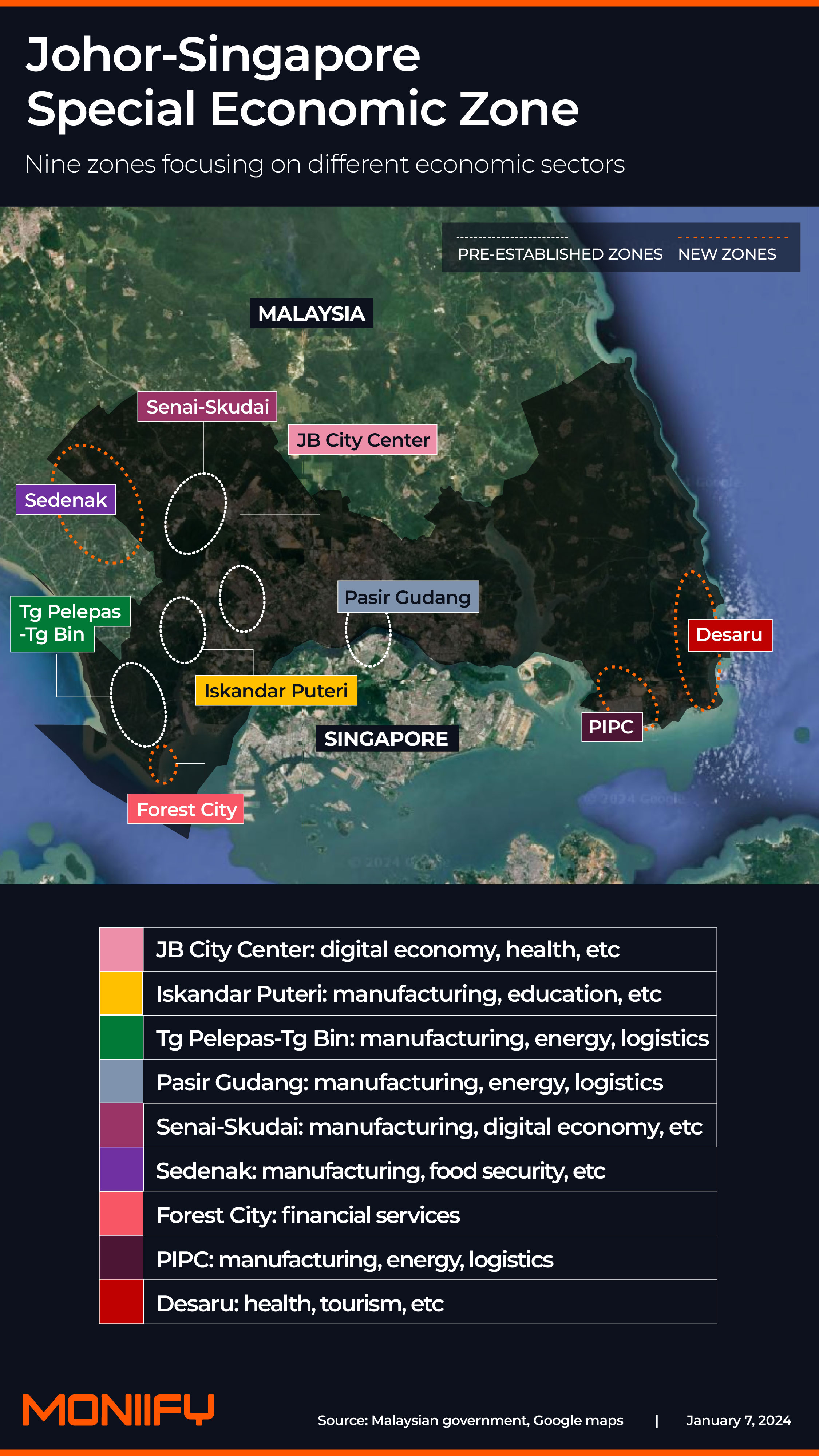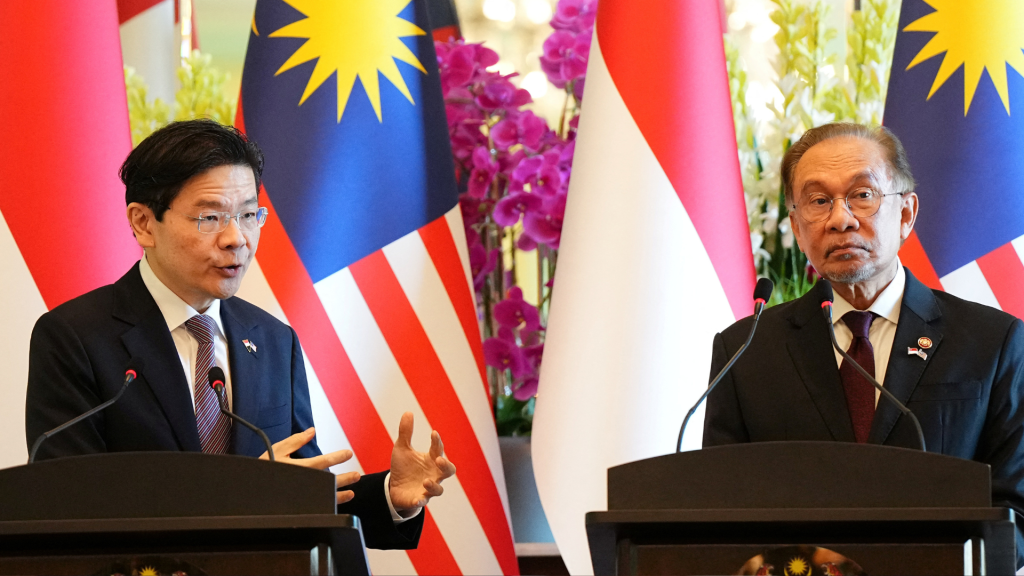Singapore and Malaysia inked a major agreement on Tuesday to create a special economic zone in the Malaysian state of Johor, with the aim of creating 20,000 skilled jobs in its first five years.
The Johor-Singapore Special Economic Zone (JS-SEZ), to be jointly run by both countries, will be four times the size of Singapore. It’s aimed at attracting global investment and freeing up the movement of goods and people between the neighbors, with the goal of drawing 50 projects in the first five years, and 100 in its first decade.
The project’s drawn comparisons to China’s Shenzhen Special Economic Zone, which is home to giants like Huawei, Tencent, and DJI, earning it the status of China’s “Silicon Valley”.
But while the announcement of the scheme was scant on details, observers say not to expect a Shenzhen-style economic miracle from the initiative.
Read more: Singapore’s got deep pockets for deep tech
The fine print
So how will it work?
Spanning more than 3,500 km2 across Johor, the JS-SEZ will be split into nine distinct zones, each with a special focus on sectors, from manufacturing, the digital economy, the green economy, tourism and financial services.

And instead of building infrastructure projects before attracting investment, it will do things the other way around — building only after the ink is signed, giving investors the flexibility to choose the areas best suited for their operations. Malaysia will fund infrastructure projects, while Singapore will fund investments.
The Malaysian government has also dangled incentives for investors, such as a special corporate tax rate to lure companies that bring high-value and growth businesses to the zone, and tax incentives for companies to relocate.
Read more: The AI party in Southeast Asia is just getting started
Hot and cold
Relations between the two countries haven’t always been the most neighborly. Announcing the project on Tuesday, Malaysian Prime Minister Anwar Ibrahim noted that the initiative was a rare act of collaboration between the countries.
In 2021, both countries scrapped plans for a $17 billion, 350 km high-speed rail project after a change of government in Malaysia and concerns about the cost. There’s even an unresolved territorial dispute about ownership of part of the waters between them.
But despite their past differences, the joint initiative reflects a common-sense approach to liberalizing trade and investment between the neighbors, says Geoffrey Williams, research and innovation professor at the Malaysia University of Science and Technology.
Read more: Want to invest in AI startups at a bargain? Head to Southeast Asia
The two countries share one of the world’s busiest border crossings and their economies are heavily intertwined, with Singapore the largest source of foreign direct investment into Malaysia, and Malaysia one of Singapore’s largest trading partners.
But he says that expectations should be tempered around the project. “The JS-SEZ will be a trade and investment zone with access to ASEAN, not necessarily a major industrial city [like Shenzhen].”
Curb your enthusiasm
He says that the initial five-year targets for the zone – 50 projects, 20,000 skilled jobs – seem realistically achievable. But they’d be a drop in the ocean in addressing job shortages in Malaysia, which has almost 2 million underemployed Malaysians who are mostly graduates and skilled workers.
“By their nature, new investments, especially in high technology industries, create very few jobs because of automation, digitalization and robotization,” Williams notes.
After the construction boom has passed, most jobs available in the JS-SEZ will be management and maintenance, and not high tech jobs.
Read more: No Tyme to lose for Southeast Asia’s new fintech unicorn
“It depends on whether the 50-100 targeted projects materialize, how many jobs there are and what the salaries are,” he says.
He points to an attempt by Malaysia to draw investment into the region, with the controversial Forest City project, in a part of Johor that’s now within the JS-SEZ. The project, largely financed by Chinese money, sought to lure single family offices from Singapore with a zero-tax incentive.
The project was sold as a $100 billion eco-friendly metropolis with the aim of housing up to 700,000 residents by 2035. But the development has earned a reputation as a ghost town, with only about 9,000 residents in recent years.
“If JS-SEZ is another Forest City or high-speed rail project, then the projects may not come,” says Williams.
Graphics by Alia Chughtai. Edited by Victor Loh and Tim Hume. If you have any tips, ideas or feedback, please get in touch: talk-to-us@moniify.com






